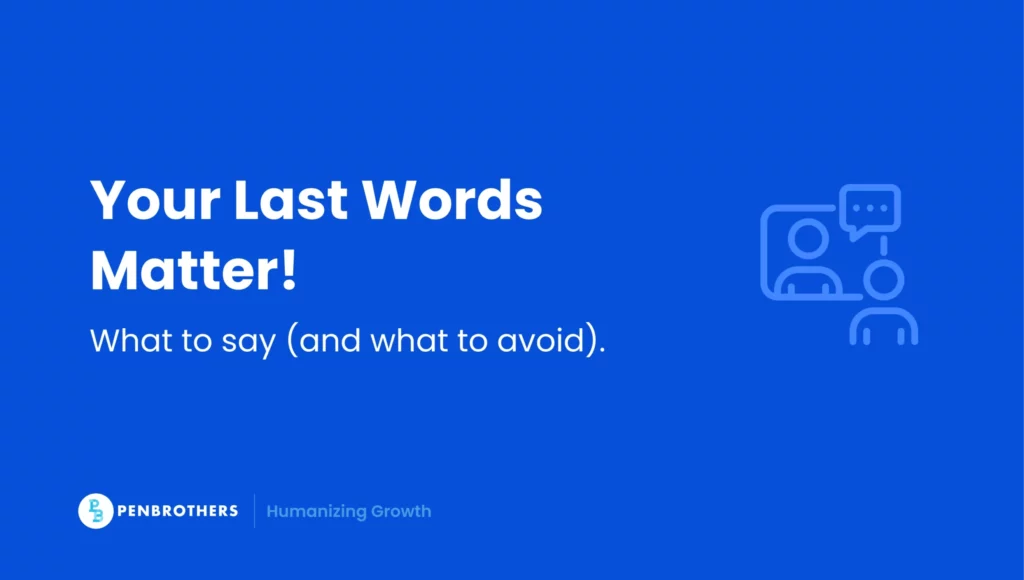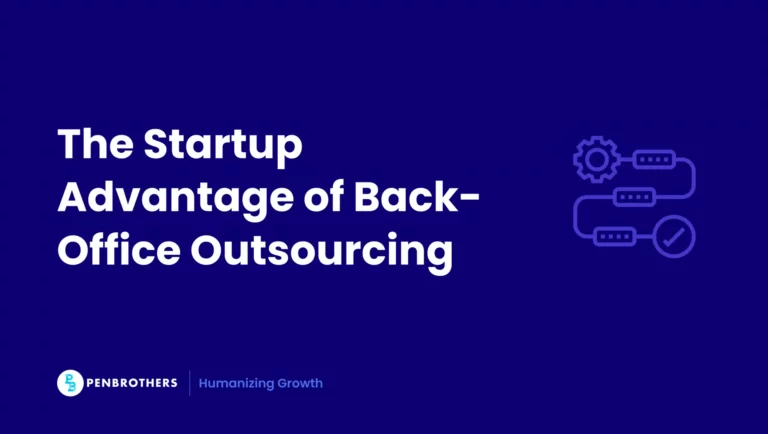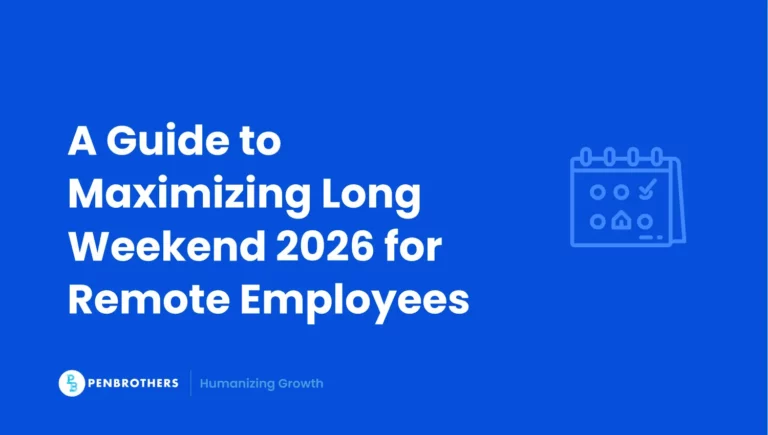Leaving a job can stir up mixed emotions, and the exit interview often feels like just another box to tick. But here’s the truth: it’s your last chance to make your voice count.
In this guide, we’ll help you navigate your exit with confidence, from what to say to how to say it. Plus, we’ll give you the tools to reflect, respond professionally, and even turn this final step into a launchpad for your next opportunity.
Key Takeaways
- A Strategic Tool for Both the Employee and the Company: An exit interview is more than just a formality. For the departing employee, it’s a final opportunity to provide constructive feedback and leave a lasting positive impression. For the company, it is a crucial data-gathering tool for identifying patterns in turnover and making improvements to the workplace culture.
- Feedback Should Be Honest, Constructive, and Professional: When providing feedback during an exit interview, employees should be honest but also professional and solution-oriented. The goal is to offer insights that can help the company improve, rather than simply venting frustrations or blaming individuals.
- A Structured Process Yields the Best Results: For an exit interview to be effective, it should follow a structured process. This includes ensuring that participation is voluntary, having the interview conducted by a neutral party (usually HR), and asking questions that cover key areas like management, work-life balance, and career growth opportunities.
- For HR, the Real Work Begins After the Interview: The true value of an exit interview is realized in the analysis and action that come after it. It is essential for HR teams to analyze the feedback they collect to identify the root causes of employee turnover, prioritize the most critical issues, and integrate these insights into the company’s long-term retention and cultural strategies.
Related: Best Answer to the Question About Reasons for Leaving Your Job
Why Exit Interviews Matter
Exit interviews are more than a formality. They’re your chance to share insights that could improve the workplace for those staying behind. Here’s how they matter:
1. Identify Patterns in Turnover
Your feedback may uncover hidden trends: stagnant roles, unclear expectations, or leadership gaps. These insights help companies fix the root causes of turnover. According to Gallup, 68% of exiting employees believe their company could’ve prevented their departure.
2. Enhance Employee Satisfaction
By contributing constructive feedback, you fuel future improvements. Your insights can directly impact new policies, better communication, and a healthier work-life balance.
3. Strengthen Employer Branding
Companies that value feedback, even from exiting employees, build stronger reputations. Your honesty helps build a culture of transparency that attracts better-fit talent.
4. Reduce Hiring Costs
Turnover is expensive. Exit interviews help HR identify and fix systemic issues, cutting down on rehire cycles and onboarding expenses.
Related: Check the 2025 Philippine Salary Guide if you’re curious about salary ranges.
The 6-Step Exit Interview Framework
To help you in this challenging career chapter, we’ve constructed a framework you can refer to. This ensures that both the employee and employer are on the same page.
Step 1: Scheduling & Consent
Participation should always be voluntary. Ideally, interviews are scheduled in advance, with enough notice to reduce stress and allow thoughtful preparation.
Step 2: Choosing the Right Interviewer
Neutrality is key. HR typically leads to ensure objectivity, while managers may offer more personalized conversations. Choose what feels safe for honest reflection.
Step 3: Question Preparation
Be ready to address your experience, leadership, team dynamics, growth opportunities, and culture. Think about what worked and what didn’t.
Step 4: Conducting the Interview
Speak with clarity and professionalism. Honest doesn’t mean harsh. Frame feedback with improvement in mind, not blame.
Step 5: Analyzing Feedback
If you’re in HR, look for patterns. If you’re the one leaving, listen to how your feedback is received—it can reflect the company’s openness to change.
Step 6: Closing on a Positive Note
End with appreciation. Leaving the door open for future reemployment, recommendations, or alumni networking is always a smart move.
Let’s now cover what to say during your actual interview.
What to Say in an Exit Interview (With Best Answer Samples)
Top 4 Exit Interview Questions
- Did you receive enough feedback and support from your manager?
- How would you rate your work-life balance?
- What aspects of your role did you enjoy most?
- What could the company improve to boost employee satisfaction?
Tip: Reflect before the interview. Be specific, honest, and solution-oriented.
Example Responses
- “I was looking for a role with more career growth and flexible work options.”
- “I appreciated my team, but clearer KPIs would’ve helped me succeed better.”
- “The hybrid policy worked well, but clearer boundaries on after-hours emails would help.”
Related: Mock Interview Guide
Common Challenges & How to Overcome Them
Even when structured well, exit interviews don’t always surface the truth. Power dynamics, fear, or lack of interviewer training can stall real insights. Understanding and addressing these friction points makes exit feedback far more valuable.
Challenge 1: Surface-Level Feedback
Employees often stick to vague answers like “everything was fine.” This provides no real insight.
Solution: Train interviewers to probe with context-based follow-ups like: “What about your day-to-day made it feel fine? Can you share a recent moment that stood out?”
Challenge 2: Fear of Retaliation
Many employees worry their honesty could impact future references or relationships.
Solution: HR should reinforce confidentiality, frame the session as voluntary, and offer alternative formats like anonymous forms or third-party interviews.
Challenge 3: One-Way Conversations
Some interviews feel transactional, with HR simply checking boxes.
Solution: Create space for dialogue. Let employees ask questions too, such as “How will this feedback be used?”
Strong exit interviews require trust. But even more important is what happens next: spotting the red flags that indicate deeper issues.
Exit Interview Red Flags to Watch Out For
Behind every rushed exit interview or defensive response lies a clue about company culture. Being aware of these red flags protects both the departing employee and the organization’s credibility.
- Defensiveness from the interviewer. This signals resistance to feedback and undermines the process.
- Rushed or impersonal tone. If it feels robotic, your input may not be valued.
- Lack of clarity on next steps. If you’re not told how feedback is handled, that’s a red flag.
If you experience these signs, stay composed and professional—but take note. These may confirm deeper organizational issues and validate your decision to move on.
Related: Recommended Answers to “Why Should We Hire You?”
After the Exit Interview: What’s Next?
The exit interview may be over, but your career isn’t. What you learn from the process can guide your next move and help you find a role that aligns with your values and vision.
Once your interview ends, take a moment to debrief. Ask yourself:
- What lessons can I carry forward into my next role?
- Which red flags do I want to avoid in future companies?
- What qualities am I now prioritizing—flexibility, leadership, pay, or culture?
Use your insights to sharpen your job search and redefine your career standards.
How to Analyze & Act on Exit Interview Data (For HR Teams)
For HR, exit interviews are only as valuable as the actions that follow. Without structure, insights stay buried in spreadsheets. But with a strategic lens, exit data can directly inform retention, leadership, and culture improvements.
Go Beyond Word Clouds
Avoid surface-level keyword tracking. Use qualitative analysis to understand why people leave, not just what they say. Compare feedback across roles, tenures, and teams.
Segment for Meaning
Group feedback by theme such as management quality, workload, inclusion, or growth. Patterns across these segments highlight root causes.
Prioritize Issues That Drive Attrition
Don’t treat all feedback equally. Weigh the themes most tied to resignations. For example, if poor leadership comes up in high-performing teams, act fast.
Integrate Into Strategy
Exit data shouldn’t live in a spreadsheet. Use insights in quarterly reviews, leadership development, and policy reforms.
Keep It Legal and Ethical
Ensure all data is anonymized and stored according to labor regulations. Feedback must be handled with discretion.
When exit feedback becomes part of your long-term strategy, real transformation begins. Let’s make sure your next exit interview is consistent, insightful, and action-ready.
Free Exit Interview Template: 20 Essential Questions
Conclusion
Exit interviews aren’t just corporate checklists. They’re your chance to leave a meaningful mark.
Whether you’re stepping away for growth, purpose, or better balance, your feedback can light the path for others and help shape future workplace culture.
Ready for your next role? Start fresh with a team that truly values what employees have to say.
Browse open roles with strong benefits and remote/hybrid setups.
Frequently Asked Questions
The purpose is twofold. For the company, it is to gather honest feedback from a departing employee in order to identify patterns in turnover, understand the reasons people are leaving, and find ways to improve the work environment. For the employee, it is a final opportunity to share their perspective in a constructive way.
You should focus on providing specific, constructive, and honest feedback. Good topics to cover include your primary reasons for leaving (framed positively, such as seeking more growth), your experience with your manager and team, your perspective on the company culture, and any specific suggestions you have for improvement.
You should avoid being overly emotional, making personal attacks on former colleagues or managers, and complaining without offering any constructive solutions. The primary goal is to provide helpful feedback that can be acted upon, not to burn bridges on your way out.
To ensure objectivity and encourage more honest and open feedback, exit interviews are typically conducted by a neutral party. In most companies, this is a representative from the Human Resources (HR) department.
Red flags from the company’s side that might indicate a poor culture include the interviewer becoming defensive or dismissive of your feedback, the interview feeling rushed and impersonal as if it’s just a checkbox, or a lack of clarity from the interviewer on how your feedback will actually be used.






